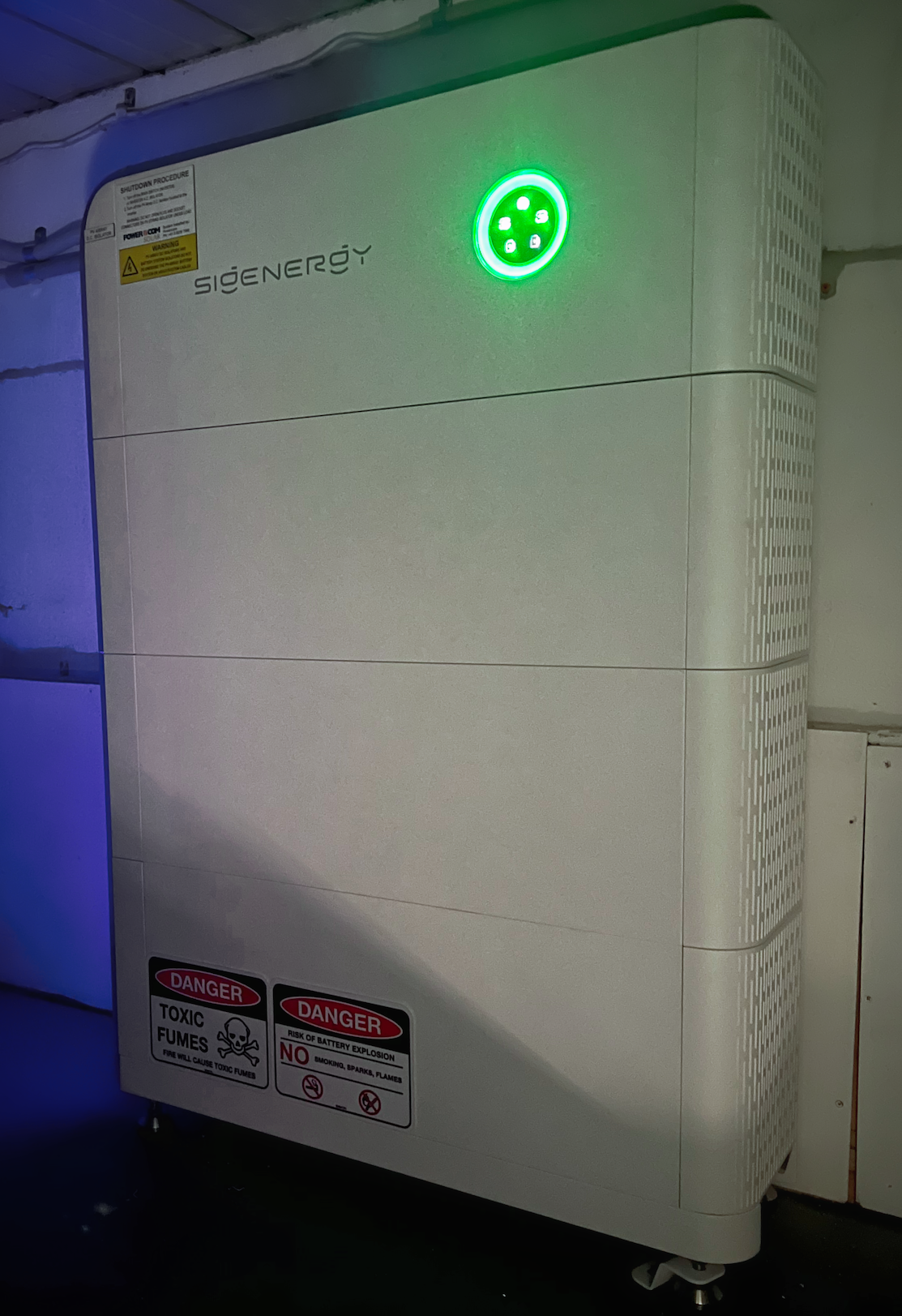I wanted to share some of the data the missus and I have collected around the decision to add a home battery to our existing home solar system - maybe it will help others who are gathering information and options about home batteries.
So we got a home battery
We’ve had solar panels since January 2023 - a pretty typical 6.6 kW system plus a 5kW inverter.
In July 2025, we got a 24 kWh SigenStor battery installed by local installer https://powercomsolar.com.au/, replacing the inverter with a 6kW SigenStor inverter and adding a gateway which allows the house to be off-grid.
Our house is single-phase. Since installation, we’ve been running the battery/inverter in Sigenergy’s “Sigen AI” mode, which spent a week learning our usage habits, and then optimised topping up the battery from off-peak so power could be utilised during peak times.
A Tale of 2 Months
Here’s what July and August have looked like for this year (August 2025 is a full battery month, July 2025 was only 10 days) compared to the past couple of years. I’ve left out the costs - but note we did reduce our bill in August 2025 compared to July 2025, as peak cost per kWh is roughly just over double off-peak here in Tasmania.
Also, July and August are deep in winter in Tasmania; producing any solar is a bonus.
| Month | Peak (kWh) | Off-peak (kWh) | Solar feed-in (kWh) | Solar yield (kWh) | Solar feed-in as % of solar yield | Peak +/- prev. year | Off-peak +/- prev. year |
|---|---|---|---|---|---|---|---|
| Jul 2023 | 397 | 777 | 122 | 278 | 44% | ||
| Aug 2023 | 324 | 612 | 246 | 418 | 59% | ||
| Jul 2024 | 429 | 903 | 111 | 282 | 39% | +32 | +126 |
| Aug 2024 | 350 | 567 | 205 | 380 | 54% | +26 | -45 |
| Jul 2025 | 445 | 1,192 | 50 | 283 | 18% | +16 | +289 |
| Aug 2025 | 27 | 1,565 | 15 | 444 | 3% | -323 | +998 |
While we’re talking figures, the Australian Government are running a battery rebate, which meant we saved about 30% on supply & install.
A few things stand out:
- peak usage is well down - as planned
- electricity consumption is up in general in 2025 thanks to buying an EV - we estimate an extra 250 kWh per month (but, no petrol costs)
- there’s more people in the house than in 2023 & 2024, leading to higher use of hot water and heating
- the feed-in tariff (“FiT”) is about 1/2 off-peak pricing, so it makes sense to use as much solar as possible, or store it in the battery
Learnings
If we were going through this again, we’d:
- definitely stick with Sigenergy - great so far, the “mySigen” app is fantastic for data nerds
- get a larger inverter - you can only draw as much as the inverter is rated (i.e. 6kWh), some nights we use 12 kWh over the span of 1-2 hours (heating!)
- reserve space for additional battery modules - where we put the battery has a low roof (see pic below), and we probably won’t be able to stack more battery modules if we want to grow the system in future
- set it up so we didn’t charge the EV from the battery

We initially estimated potential savings of $800-$1,000 per year with the battery - I’m hoping we get more than this, so we’re insulated somewhat from higher electricity prices, and the battery pays for itself in around 8 years. The battery has adequate warranty to cover a return on investment. Time will tell - it’s been a good start after only 1 month.